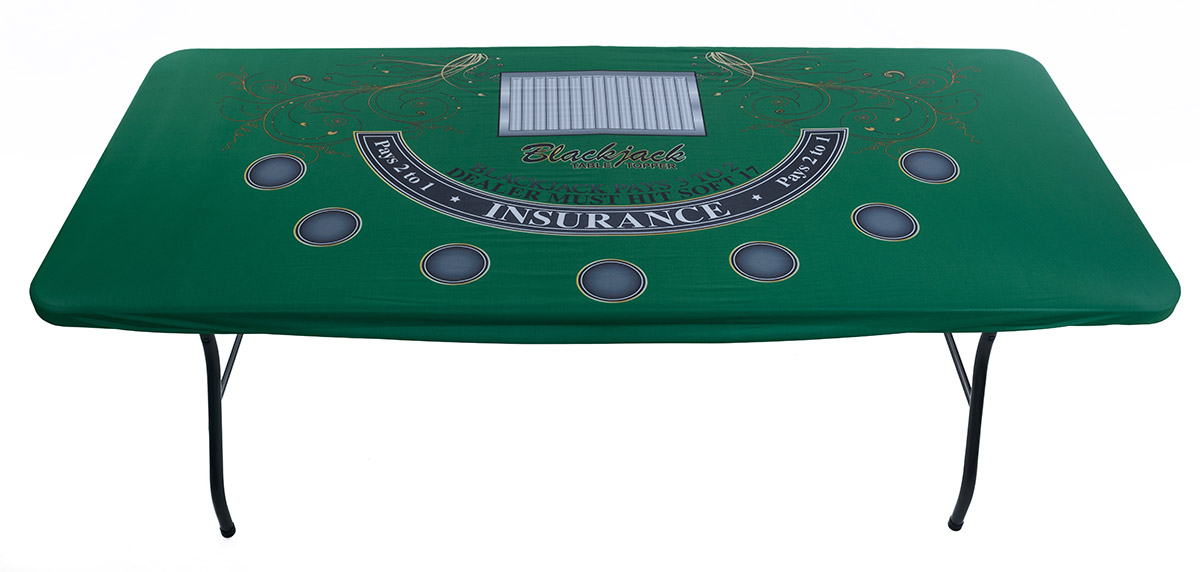A well-dressed table can add sophistication to any room You can use this softening slipcover for a side table, a dining room table, a front hall table, or anywhere you want to add a bit of style with fabric.

Poker Craps Layout Casino Game Cover Guide Party Office Playing Homemade Table 4.5 out of 5 stars (7) 7 product ratings - Poker Craps Layout Casino Game Cover Guide Party Office Playing Homemade Table. Both Our One-Man Crap Table and Our Casino Size/Professional Crap Table are Hand-Crafted with the Utmost Attention to Detail. Browse Our Craps Tables and Our Complete Craps Selection Online or Get a Free 104 Page Catalog Featuring All Our Casino and Gaming Supplies.
Try this pretty table slipcover in a heavy brocade, denim, or even a cotton canvas. It features inverted pleats that add a touch of elegance; each pleat is centered along each of the table’s lengths. You can add a simple ribbon trim to the bottom edges to match the ribbon you use for the bow detail, but avoid fringe because it’s designed to extend to the floor. This project can be used for any size table.
To determine how many yards of fabric you need, add your table’s height to the tabletop’s circumference, add 12 inches per pleat, and divide by 36.


Diy Poker Table Cover
The table used for this example was 30 inches high, 30 inches long, and 24 inches wide. Adding the width of 30 inches to the length measurement, you get 54 inches. To that you add 12 inches per pleat for a total of 156 inches. Because the table is 30 inches high, 45-inch wide fabric would work perfectly. To find the total yardage needed divide 156 inches by 36 to come up with approximately 4-1/2 yards of 45-inch-wide fabric.
Your ribbon measurements should be in proportion to the size of the table you’re treating.
Blackjack Table Cover
Follow these steps to make your table cover:
Blackjack Tables For Sale
Iron all your fabric well.
Measure your tabletop and add 1 inch to each measurement (for the seam allowance) and record it in your notebook as “Tabletop Pattern, Cut 1.”
Measure the height and width of the front of the table, adding 12 inches to the width for the pleat allowance, plus 1 inch for the seam allowance to both measurements, and record the measurement in your notebook as “Front/Back Pattern, Cut 2.”
Measure the height and depth of the side of the table, adding 12 inches to the width for the pleat allowance, plus 1 inch for the seam allowance to both measurements, and record it in your notebook as “Side Pattern, Cut 2.”
If you’re creating paper patterns, transfer the measurements to paper, cut the paper out, label each pattern piece, and use them to cut your fabric.
If you’re just measuring your fabric, use an L-square to keep your edges straight, and cut your fabric.
Fold, press, and pin your two “Front/Back” pieces to create pleats.
Fold and pin your fabric in 12-inch increments, so that your pleat measures 6 inches (formed by the 3 inches of “tucked” fabric on either side).
Fold, press, and pin your two “Side” pieces to create pleats.
With the right sides together, using a 1/2-inch seam allowance, sew your panels in between the front and back panels.
Sew up to the top, leaving a 1/2-inch area unsewn so that you can sew around the corners when you add the top.
Pin the right side of your top panel to your skirt so that all the corners line up with the skirt seams.
Sew the slipcover top to the rest of your slipcover, matching corner to corner, and with a 1/2-inch seam allowance.
When sewing the unsewn 1/2-inch areas (see Step 8) to the slipcover top, be sure to back tack a few times so your seams will hold.
Hem any unstitched edges with a 1/2-inch seam allowance (or sew on decorative ribbon or other trim to the bottom edge).
Press your slipcover and put in on the table.
Add your bows by locating the top of a pleat and measuring down from the top 7 inches.
Pin two pieces of ribbon of equal length to the inside edge of the pleat. You can either remove the slipcover from the table and stitch the ribbons to the pleat and tie them into a bow, or you can work right on the table and hand stitch them on, whichever is easiest for you.